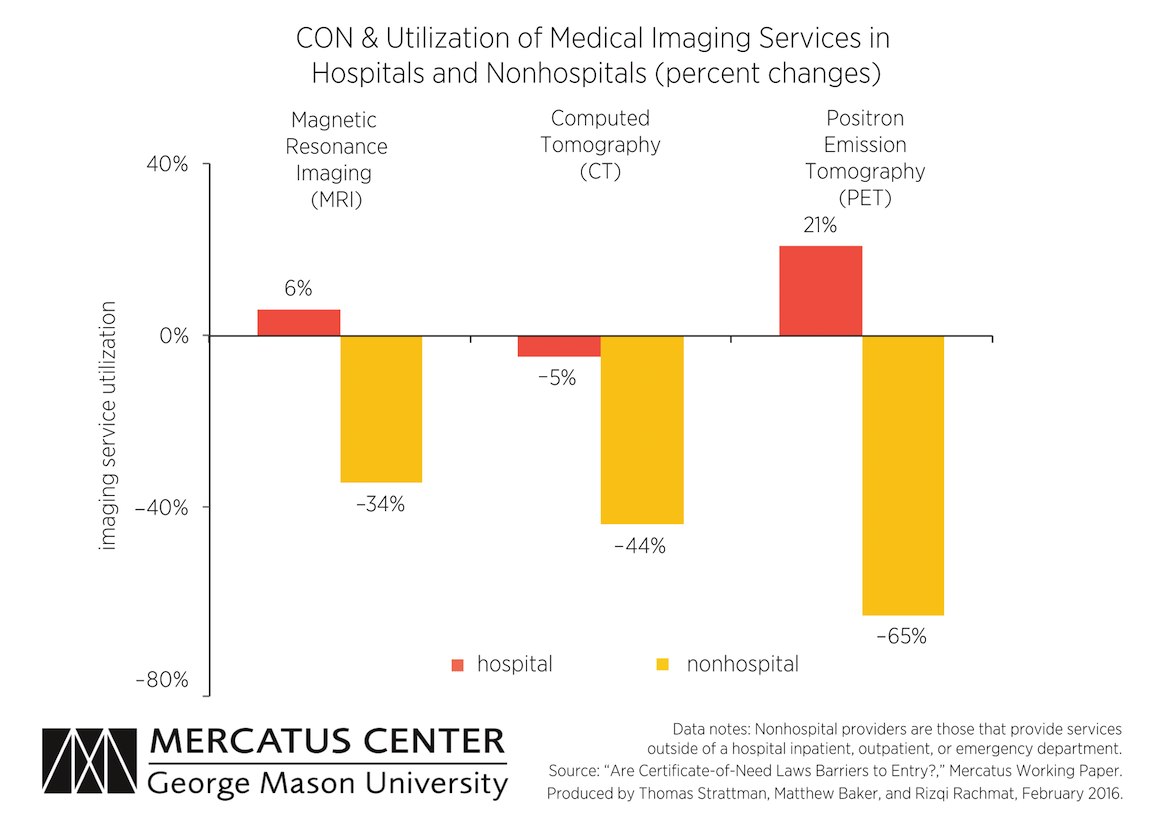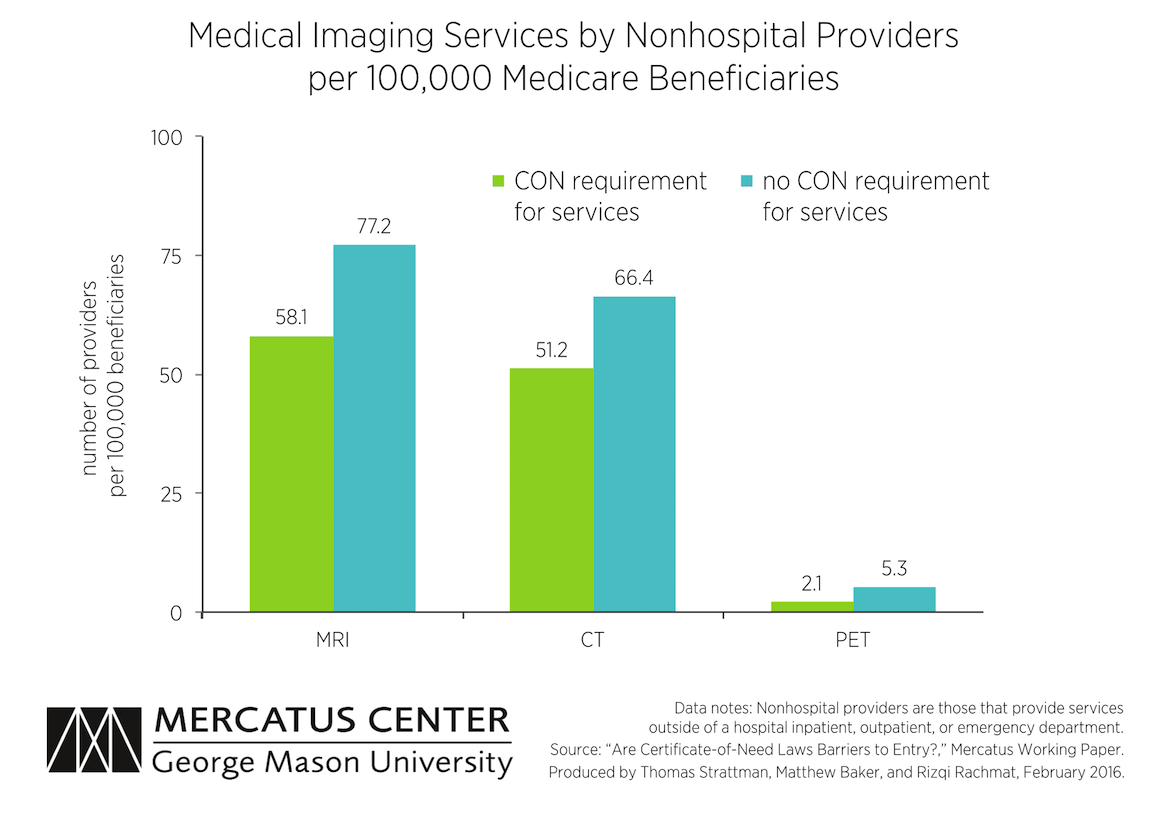- | Healthcare Healthcare
- | Data Visualizations Data Visualizations
- |
Impact of Certificate-of-Need Laws on the Provision of Medical Imaging Services
Certificate-of-need (CON) laws in 21 states restrict acquisition of imaging equipment, including MRI, CT, and PET scans. These CON requirements effectively protect established hospitals from nonhospital competitors that provide medical imaging services, such as independently practicing physicians, group practices, and other ambulatory settings. In the process of protecting hospitals from these nonhospital providers, CON laws limit the imaging services available to patients.
Certificate-of-need (CON) laws in 21 states restrict acquisition of imaging equipment, including MRI, CT, and PET scans. These CON requirements effectively protect established hospitals from nonhospital competitors that provide medical imaging services, such as independently practicing physicians, group practices, and other ambulatory settings. In the process of protecting hospitals from these nonhospital providers, CON laws limit the imaging services available to patients.
The chart above shows that CON requirements reduce nonhospital provision of MRI, CT, and PET scans compared to hospital provision of these services, all relative to states where such laws are absent. The existence of a CON law decreases nonhospital MRI scans by 34 percent, CT scans by 44 percent, and PET scans by 65 percent, all relative to states without CON laws.
The second chart shows that CON laws are associated with states having fewer providers of medical imaging services relative to states without CON laws, particularly for nonhospital providers such as independently practicing physicians, group practices, and other ambulatory settings—all to the detriment of patients.
Taken together, these charts show that the main effect of CON laws is to reduce the availability of imaging services for healthcare consumers. The first chart shows how CON laws reduce nonhospital provision of imaging services relative to states without CON laws, and the second chart shows how CON laws reduce the number of nonhospital providers in general compared to states without CON laws. If policymakers in the 21 states that retain CON legislation wish to increase the access sick residents of their states have to MRI, CT, and PET imaging services, they should consider doing away with CON laws that regulate imaging services.



